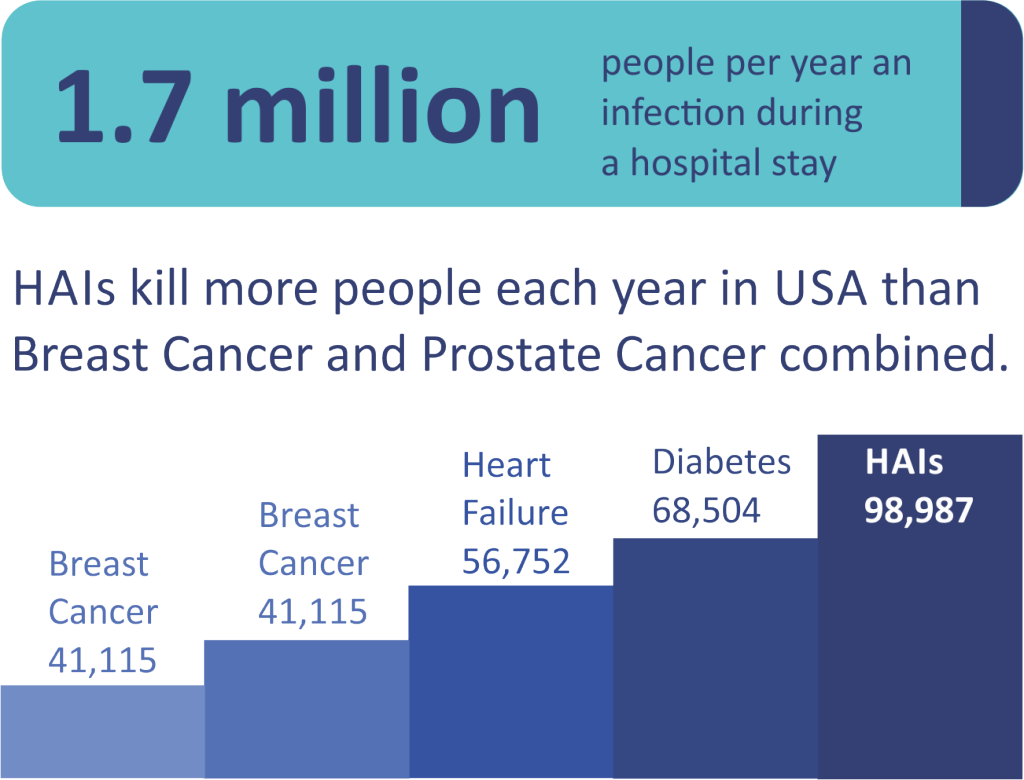Healthcare-associated infections (HAI) basics
- HAI, or infections acquired in health-care settings are the most frequent adverse event in healthcare delivery worldwide.
- Hundreds of millions of patients are affected by HAI worldwide each year, leading to significant mortality and financial losses for health systems.
- Of every 100 hospitalized patients at any given time, 7 in developed and 10 in developing countries will acquire at least one HAI.
- The endemic burden of HAI is also significantly higher in low- and middle-income than in high-income countries, in particular in patients admitted to intensive care units and in neonates.
- While urinary tract infection is the most frequent HAI in high-income countries, surgical site infection is the leading infection in settings with limited resources, affecting up to one-third of operated patients; this is up to nine times higher than in developed countries.
- In high-income countries, approximately 30% of patients in intensive care units (ICU) are affected by at least HAI.
- In low- and middle-income countries the frequency of ICU-acquired infection is at least 2─3 fold higher than in high-income countries; device-associated infection densities are up to 13 times higher than in the USA.
- Newborns are at higher risk of acquiring HAI in developing countries, with infection rates three to 20 times higher than in high-income countries.

Source: WHO, GE
